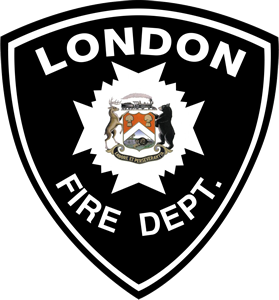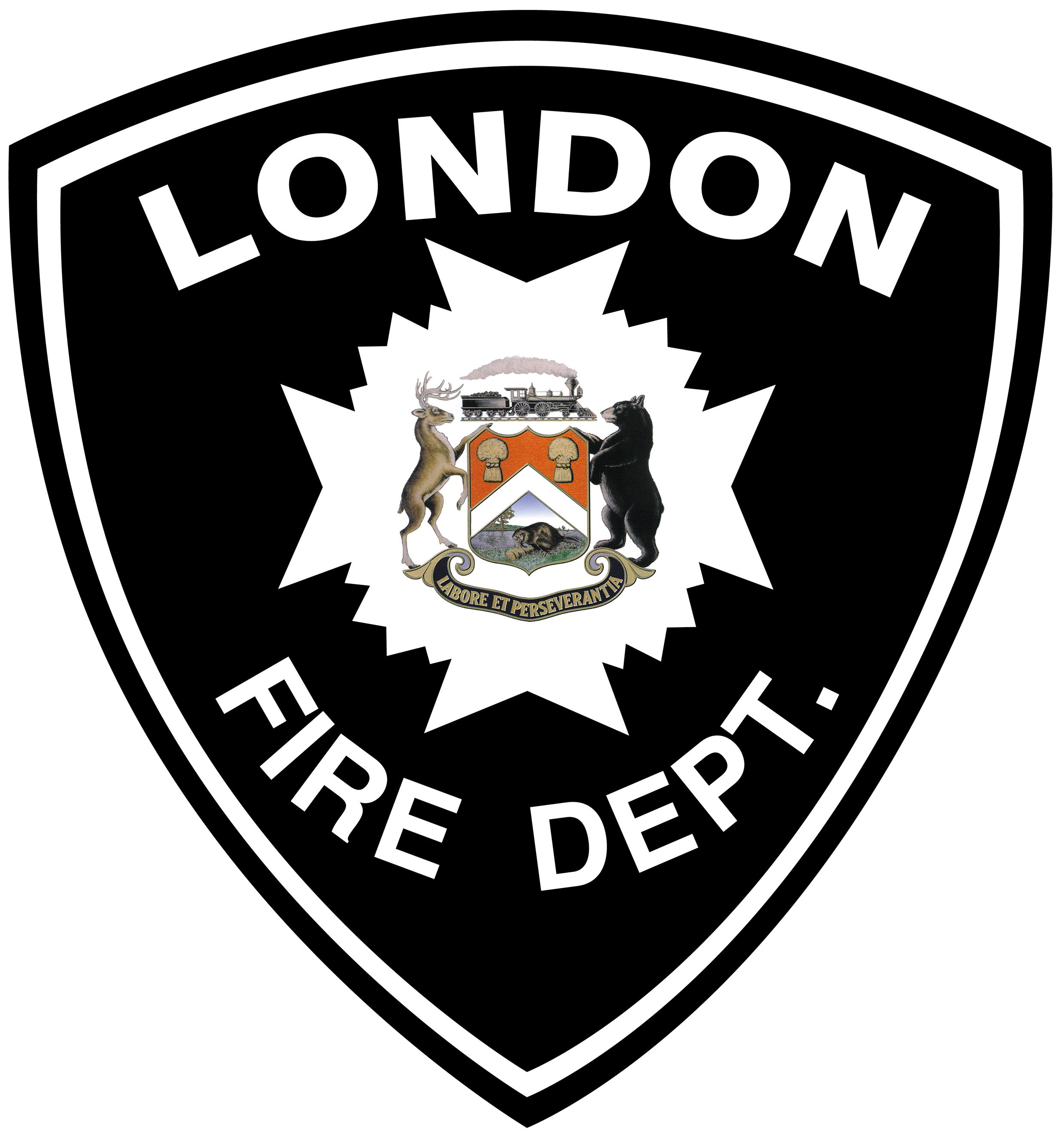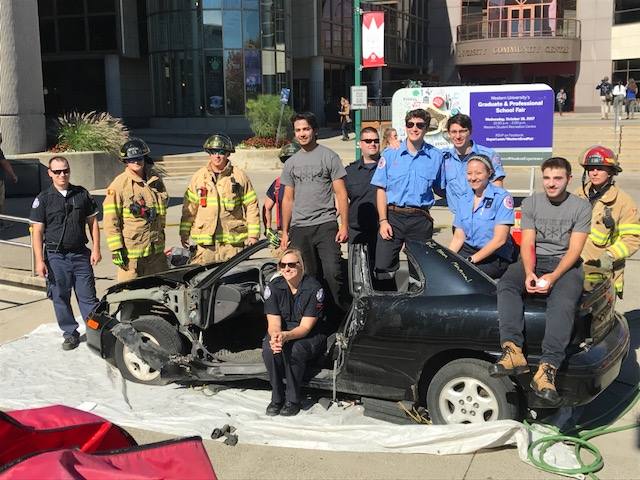Three big scares last week — a suspicious package, a mysterious white powder and a bomb scare — forced London police and firefighters to call out specially trained teams. Free Press reporter Kelly Pedro looks at the scares that tied up hazardous material teams, bomb technicians and uniformed officers and firefighters who had to block roads to keep the public safe. She also explains a police plan to wrap up those scenes more quickly with the help of a handheld tool.
– – –
Monday:
THE SUSPICIOUS PACKAGE
For about two hours last Monday, the bag of clothes shown below blocked a major city artery and forced London police to call on one of their bomb technicians. The scene outside police headquarters about noon also brought out one fire pumper and a command car. It was two hours before police determined the bag wasn’t a threat and the risk lifted. But during the investigation, officers blocked parts of Dundas St. and were unable to respond to other calls. They also shut the doors to their headquarters and the public couldn’t access the building for services such as record screening. “It’s one of our busiest times (of the year for record screening),” deputy police chief John Pare said. Suspicious packages are usually placed in a bomb truck equipped to remove them to a safe location and then blow them up. Police also sometimes use robots with cameras to get a closer look, X-ray the item to find out what’s inside and remove it from the scene.
Wednesday:
THE WHITE POWDER
A mysterious white powder found early Wednesday inside Canada Post’s mail processing plant on Highbury Ave. tied up at least 10 London fire hazardous materials technicians and extra firefighters, who were also on scene for support.
“You have to be very methodical, which means it takes more time,” Fire Chief John Kobarda said.
The plant was evacuated and 15 employees isolated because they had been close to the package. The plant didn’t reopen until Canada Post was satisfied all the powder was removed. The powder was sent to Toronto for analysis.
Friday:
THE BOMB SCARE
A bomb threat Friday night delayed train traffic in and out of London. While dozens of Via Rail passengers crowded the station about 8 p.m., London police investigated the threat that quickly turned out to be false. Bomb scares and mystery powders pull resources from the street and affect the ability of police to respond to calls for service and be visible in the community, Pare said.
Though each call last week didn’t lead to any injuries or chaos, emergency crews still have to respond as if it could.
“The chances are it could be something,” Kobarda said. “You always have to assume the worst and put public safety first. Had that white powder been something, had that thing outside the police station been a bomb, had the train station (call) been a bomb, it could have potentially injured a lot of people.”
– – –
A TOOL THAT CAN CHANGE IT ALL
In their 2013 capital budget, London police want to buy a handheld tool that will identify hazardous materials, explosives, chemicals, drugs, common powders and other potential threats by analyzing a single drop or grain of powder in about 20 seconds. Though the portable device comes with a big price tag — $154,000 — it could pay off by giving investigators faster results and possibly lead to less time guarding scenes if there’s no emergency.
“When you think of the inconvenience to the public (of those calls), shutting down Canada Post and even the cost of police officers and firefighters tied up dealing with the situation, that’s a huge impact,” Pare said.
via The London Free Press.
Three big scares last week — a suspicious package, a mysterious white powder and a bomb scare — forced London police and firefighters to call out specially trained teams. Free Press reporter Kelly Pedro looks at the scares that tied up hazardous material teams, bomb technicians and uniformed officers and firefighters who had to block roads to keep the public safe. She also explains a police plan to wrap up those scenes more quickly with the help of a handheld tool.
– – –
Monday:
THE SUSPICIOUS PACKAGE
For about two hours last Monday, the bag of clothes shown below blocked a major city artery and forced London police to call on one of their bomb technicians. The scene outside police headquarters about noon also brought out one fire pumper and a command car. It was two hours before police determined the bag wasn’t a threat and the risk lifted. But during the investigation, officers blocked parts of Dundas St. and were unable to respond to other calls. They also shut the doors to their headquarters and the public couldn’t access the building for services such as record screening. “It’s one of our busiest times (of the year for record screening),” deputy police chief John Pare said. Suspicious packages are usually placed in a bomb truck equipped to remove them to a safe location and then blow them up. Police also sometimes use robots with cameras to get a closer look, X-ray the item to find out what’s inside and remove it from the scene.
Wednesday:
THE WHITE POWDER
A mysterious white powder found early Wednesday inside Canada Post’s mail processing plant on Highbury Ave. tied up at least 10 London fire hazardous materials technicians and extra firefighters, who were also on scene for support.
“You have to be very methodical, which means it takes more time,” Fire Chief John Kobarda said.
The plant was evacuated and 15 employees isolated because they had been close to the package. The plant didn’t reopen until Canada Post was satisfied all the powder was removed. The powder was sent to Toronto for analysis.
Friday:
THE BOMB SCARE
A bomb threat Friday night delayed train traffic in and out of London. While dozens of Via Rail passengers crowded the station about 8 p.m., London police investigated the threat that quickly turned out to be false. Bomb scares and mystery powders pull resources from the street and affect the ability of police to respond to calls for service and be visible in the community, Pare said.
Though each call last week didn’t lead to any injuries or chaos, emergency crews still have to respond as if it could.
“The chances are it could be something,” Kobarda said. “You always have to assume the worst and put public safety first. Had that white powder been something, had that thing outside the police station been a bomb, had the train station (call) been a bomb, it could have potentially injured a lot of people.”
– – –
A TOOL THAT CAN CHANGE IT ALL
In their 2013 capital budget, London police want to buy a handheld tool that will identify hazardous materials, explosives, chemicals, drugs, common powders and other potential threats by analyzing a single drop or grain of powder in about 20 seconds. Though the portable device comes with a big price tag — $154,000 — it could pay off by giving investigators faster results and possibly lead to less time guarding scenes if there’s no emergency.
“When you think of the inconvenience to the public (of those calls), shutting down Canada Post and even the cost of police officers and firefighters tied up dealing with the situation, that’s a huge impact,” Pare said.
via The London Free Press.



